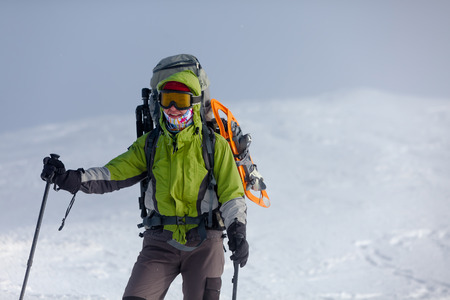1. Understanding Dental Emergencies on the Trail
When you’re out hiking or camping, dental emergencies can catch you off guard and quickly turn an amazing adventure into a stressful experience. Some of the most common dental problems outdoor enthusiasts encounter include chipped or cracked teeth from unexpected falls, lost fillings while eating trail mix, or even knocked-out teeth from accidents. Out in the wilderness, access to professional dental care is limited or non-existent, making it crucial to recognize these issues early and know how to respond. Learning basic dental first aid not only helps manage pain and prevent further damage but also gives you peace of mind so you can focus on enjoying the great outdoors. Whether you’re an experienced backpacker or heading out for your first camping trip, understanding dental emergencies and how to handle them is an essential part of keeping your mouth healthy and your adventure on track.
2. Trail-Ready Dental First Aid Kit Essentials
When you’re out on the trail, a dental emergency can turn an exciting adventure into a stressful ordeal. That’s why having a compact dental first aid kit in your backpack is just as important as carrying bandages or sunscreen. Here are the must-have items for a trail-ready dental first aid kit, focusing on products that are easy to find in the US and perfect for any outdoor enthusiast.
Essentials for Your Dental First Aid Kit
| Item | Purpose | US Availability Tips |
|---|---|---|
| Dental Wax (Orthodontic Wax) | Covers broken teeth or braces to prevent irritation | Available at most drugstores like CVS, Walgreens, or Target |
| Cotton Swabs and Gauze Pads | Stops bleeding and protects wounds in the mouth | Common in first aid aisles; look for small travel packs |
| Salt Packets | Makes a simple saline rinse to clean wounds or ease pain | Grab from fast food restaurants or camping sections in stores |
| Temporary Dental Filling Material | Fills lost fillings or crowns until you reach a dentist | Look for “temporary filling” kits at pharmacies; brands like Dentemp are popular |
| Small Mirror and Tweezers | Helps inspect injuries and remove debris safely | Pocket-sized mirrors and tweezers are widely available in travel grooming kits |
| Pain Relief: Oral Gel (like Orajel) & Ibuprofen Packets | Eases toothache pain and reduces inflammation or swelling | Single-use packets are sold at most US pharmacies and convenience stores |
| Disposable Gloves (Nitrile or Latex-Free) | Keeps things sanitary if you need to help someone else with their injury | Buy small packs at Target, Walmart, or online retailers like Amazon |
| Zippered Pouch or Waterproof Bag | Keeps all your dental supplies clean, dry, and easy to find in your pack | Camping stores carry lightweight options; reusable snack bags also work well |
How to Pack Your Dental First Aid Kit Smartly?
Choose travel-size versions whenever possible, and store everything together so it’s easy to grab in a hurry. Keep your kit separate from the rest of your first aid supplies for quick access. Check expiration dates on medications regularly, and replace any used items before your next adventure. With these essentials on hand, you’ll be ready to handle unexpected dental problems with confidence—no matter where the trail takes you!
![]()
3. Immediate Steps for Managing Dental Injuries
When a dental emergency strikes on the trail, staying calm and taking quick, practical action can make all the difference. Here’s how to handle some of the most common dental injuries you might encounter while hiking or camping in the U.S.
For a Knocked-Out Tooth (Adult Tooth Only)
- Pick up the tooth by the crown (the white part), not the root. Avoid touching or cleaning the root to protect vital cells.
- If dirty, gently rinse it with clean water—don’t scrub or use soap.
- If possible, try to place the tooth back in its socket. Have the person bite down gently on gauze or a clean cloth to hold it in place.
- If reinsertion isn’t possible, store the tooth in a small container of milk or saline solution. In a pinch, use the injured person’s saliva.
- Seek professional dental care as soon as possible—ideally within 30 minutes for the best chance of saving the tooth.
For a Broken or Chipped Tooth
- Rinse the mouth gently with warm water to clean away debris.
- If there’s bleeding, apply gentle pressure with gauze or a clean cloth until it stops.
- Save any broken pieces if you can find them; keep them moist in milk or saline solution.
- Cover any sharp edges with dental wax or sugarless gum to prevent cuts inside the mouth.
- See a dentist promptly once you’re back from your trip.
For Toothache or Swelling
- Rinse your mouth with warm saltwater to reduce bacteria and ease discomfort.
- If swelling is present, apply a cold compress to the outside of your cheek for up to 20 minutes at a time (never put ice directly on gums).
- Avoid aspirin directly on gums—it can burn tissue. Use over-the-counter pain relief as directed, if needed and safe for you.
Additional Tips for Trailside Dental Care
- Always carry a small dental first aid kit with gloves, gauze, a tiny container, and saline solution in your hiking gear.
- If someone experiences jaw injury and can’t close their mouth comfortably, stabilize their jaw with a scarf or bandana tied under their chin until help arrives.
Remember:
You’re not alone! Most dental emergencies are manageable if you stay calm and follow these steps. Get professional help as soon as you can—even if symptoms seem to improve—so you can get back to enjoying your adventure safely and pain-free.
4. Pain Management and Infection Prevention
When you’re miles away from the nearest dentist, knowing how to manage dental pain and prevent infection is essential for a safe and enjoyable hiking experience. Whether you’re dealing with a sudden toothache or an injured gum, here are practical, trail-tested ways to take care of your oral health using over-the-counter (OTC) medications, natural remedies, and smart hydration strategies that fit right into American hiking culture.
Over-the-Counter Medications
Many hikers keep a few basic OTC medications in their first aid kits. These are easy to find at any American pharmacy and can make a big difference in a dental emergency. The table below summarizes the most common options:
| Medication | Use | Dosage Tips |
|---|---|---|
| Ibuprofen (Advil, Motrin) | Reduces pain & inflammation | Take with food/water; follow label instructions |
| Acetaminophen (Tylenol) | Pain relief (no anti-inflammatory effect) | Do not exceed daily limit; gentle on stomach |
| Benzocaine gel (Orajel) | Numbs localized mouth pain | Apply directly to sore area; avoid swallowing excess gel |
Natural Remedies Popular Among Hikers
If you prefer more natural options or run out of OTC meds, there are several safe remedies commonly used on the trail:
- Saltwater Rinse: Mix a pinch of salt with clean water and swish gently to help reduce bacteria and soothe irritated gums.
- Clove Oil: Dab a small amount on a cotton swab and apply it to the sore spot—clove oil has natural numbing properties.
- Cooled Peppermint Tea Bags: After brewing, cool the tea bag and place it against the affected area for temporary relief.
Smart Hydration Practices
Staying hydrated is not only vital for your overall health but also helps maintain a healthy mouth. Dry mouth increases the risk of infection, especially if you have an open wound or sore. American hikers often follow these simple hydration tips:
- Sip water frequently: Carry a reusable water bottle and take small sips throughout your hike.
- Avoid sugary sports drinks: While tempting, these can feed bacteria if you have a cut or cavity.
- Add electrolyte tablets as needed: Choose sugar-free options to support hydration without harming your teeth.
Quick Reference: Managing Dental Pain & Infection on the Trail
| Method | Main Benefit |
|---|---|
| Ibuprofen or Acetaminophen | Pain relief & swelling control |
| Benzocaine Gel | Numbs specific areas quickly |
| Saltwater Rinse/Clove Oil/Peppermint Tea Bag | Soothe and disinfect naturally |
| Sipping Water Regularly | Keeps mouth clean & reduces infection risk |
A Note on Seeking Professional Care
If pain persists more than 24-48 hours, worsens, or is accompanied by fever or swelling, seek professional medical help as soon as possible—even if it means cutting your hike short. Early intervention is key to preventing serious complications.
5. When to Hike Out or Call for Help
Sometimes, dental issues on the trail go beyond home remedies and require urgent professional care. Knowing when to seek immediate help can make a crucial difference in your recovery and overall health.
Signs You Need Urgent Dental Care
Not every toothache is an emergency, but certain symptoms are red flags that you should not ignore. These include:
- Severe, persistent pain: Pain that does not subside with over-the-counter medication or worsens rapidly.
- Significant swelling: Swelling of the gums, face, or jaw, especially if it spreads or makes swallowing and breathing difficult.
- Bleeding that won’t stop: Continuous bleeding from your mouth or gums after trauma or tooth loss.
- Pus or signs of infection: Presence of pus, foul taste, or fever—these may indicate a serious infection requiring antibiotics.
- Jaw injury: Difficulty opening or closing your mouth, misalignment after a fall, or suspicion of a broken jaw.
Getting Assistance While on the Trail
If you experience any of these warning signs, its time to take action. Here’s how you can get help even in remote areas:
Cell Coverage Tips
Much of the U.S. backcountry has spotty cell service, but try these steps:
- Move to higher ground or open areas for a better signal.
- If you have at least one bar of reception, call 911 and clearly state your location using landmarks or GPS coordinates.
- Texting 911 is available in some regions—try sending a text if calling doesn’t work.
Satellite Communication Devices
If cell service isn’t available, many American hikers carry satellite messengers such as Garmin inReach or SPOT devices. These tools can send SOS alerts with your GPS location directly to emergency responders. Make sure your device is registered and fully charged before heading out.
Plan Ahead for Emergencies
Before your hike, let someone know your route and expected return time. Carry an updated list of local emergency numbers and research the nearest urgent care clinics near your trailhead. A little planning goes a long way if dental trouble strikes while you’re miles from help.
6. Tips for Preventing Dental Problems Outdoors
Taking care of your teeth while exploring the great outdoors doesn’t have to be complicated. With a few simple habits and some easy preparation, you can keep your smile healthy, even on the trail. Here are some practical tips tailored for American outdoor lifestyles:
Smart Food Choices
- Pack Tooth-Friendly Snacks: Choose snacks like nuts, cheese, apples, carrots, and whole-grain crackers instead of sticky granola bars or candy. These foods help clean your teeth and provide lasting energy.
- Avoid Sugary Drinks: Swap sodas and sweetened sports drinks for water or unsweetened tea. If you enjoy electrolyte beverages, rinse your mouth with water afterward to minimize sugar exposure.
Simple Oral Hygiene on the Go
- Travel-Size Essentials: Bring a compact toothbrush, a small tube of fluoride toothpaste, and dental floss in your pack. Consider disposable floss picks for quick cleaning after meals.
- Brush Twice Daily: Even if you’re camping or hiking, make time to brush morning and night. Use bottled or filtered water if you don’t have access to clean tap water.
- No Water? Try Chewing Gum: Sugar-free gum (especially with xylitol) helps stimulate saliva and reduce plaque when brushing isn’t possible.
Outdoor Habits to Protect Your Smile
- Avoid Using Teeth as Tools: Don’t use your teeth to open packages, bottles, or cut fishing line—carry a multi-tool instead!
- Mouthguard for Sports: If you’re mountain biking, climbing, or playing contact sports, wear a mouthguard to prevent dental injuries.
Stay Prepared
- Add a small dental emergency kit (pain reliever, temporary filling material, cotton swabs) to your first aid supplies.
Your Adventure-Ready Smile
With these tips in mind, you can confidently enjoy America’s parks, trails, and campgrounds while keeping your mouth healthy. A little planning goes a long way toward preventing dental emergencies—and lets you focus on making memories outdoors!


